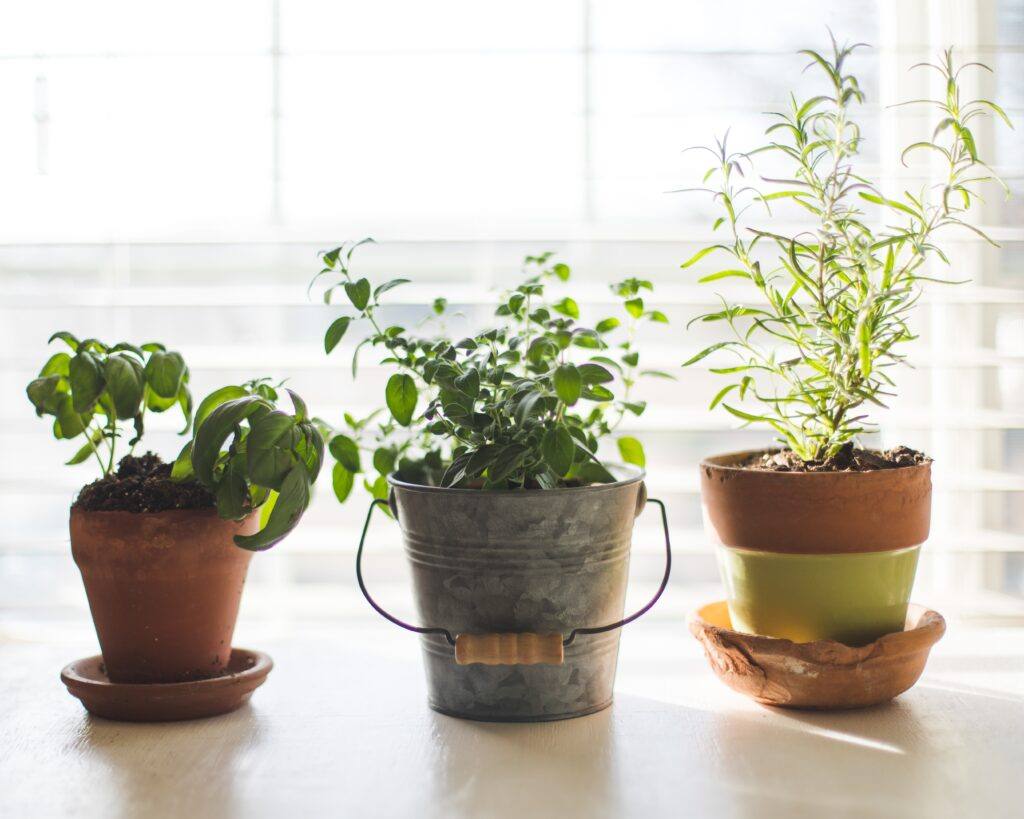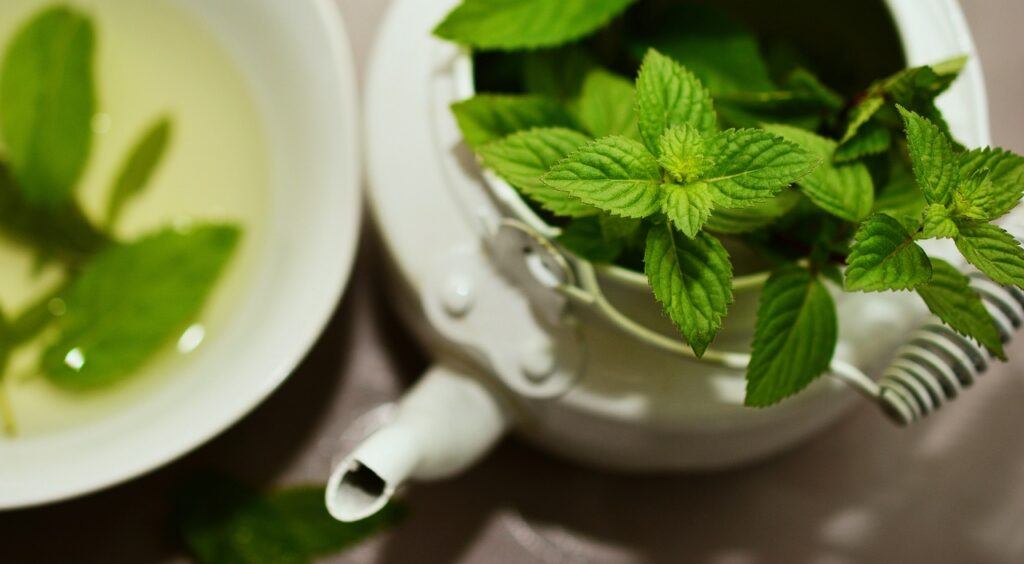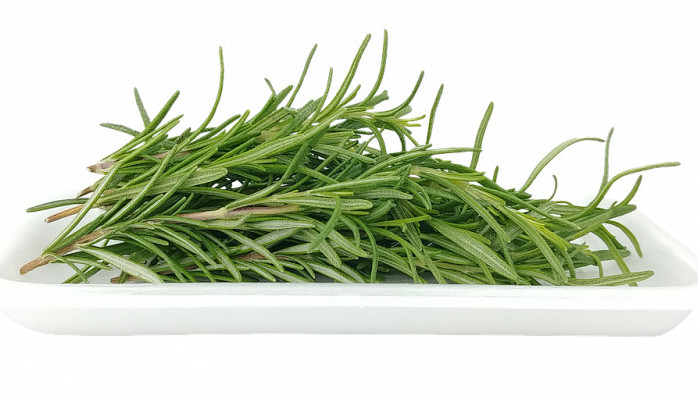
Taking the First Step: Setting up an Indoor Herb Garden
Whether you are planning on starting a full vegetable garden, planting a small kitchen garden, or living in an apartment and creating a place where you can have a few pots, starting the adventure of growing herbs has so many advantages.
All you need to start is a window that has a lot of sunlight. An ideal place is a balcony if you have one, as this will also allow your budding plants to have an abundance of fresh air as well.
You can also enjoy the benefits of producing your own food. There will be no more instances of having to buy an entire bunch of basil or mint when you only need a small amount and then having to throw out the remainder. You will be able to just pinch off however much you need and leave the healthy plant growing in its pot.
There is also the added benefit that you can ensure that you are growing organic herbs entirely free from chemicals, additives, or preservatives.
If your pots are in a window, the plants will naturally grow toward the light, so it is a good idea to turn the pots every so often to stop them from growing unevenly. You may also need to transplant them into larger pots if they grow too fast (see below), or you can keep them under control with regular pruning.
Choosing Your Herbs: The Easy-to-grow Indoor Variety
There are a number of common herbs that are very easy to grow indoors, but they need to be treated differently. Annuals like basil will need to be planted each spring, whereas perennials will keep growing year-round. Although this may also depend on the climate in which you live, There are some other annuals, such as dill or fennel, that may reseed naturally if planted in the garden and will pop up in different places in the garden each year. This shouldn’t be a problem if you’re growing your herbs in pots.
The most important decision to make is to choose herbs you are going to enjoy eating. If you enjoy Mediterranean recipes, then growing basil and oregano would be ideal. On the other hand, if you are more of a traditionalist and regularly cook roast dinners, then perhaps rosemary and thyme would be preferable. I have had mint growing for years because my grandmother would always have mint sauce and mint jelly in the cupboard to enjoy with a variety of meals, and making it always takes me back to my childhood.
All of these herbs are easy to grow in pots, preferably from seedlings. The secret is just to ensure they have enough light.
Understanding Your Herbs: From Individual Pots to Pruning

It is easier to commence with seedlings rather than raising them from seeds, though some people enjoy watching seeds sprout from seed-raising pods. Seedlings usually come in 100mm (4 in) pots. They will usually need transplanting within a few weeks. I would not transplant much earlier, as you will run the risk of root shock, which will slow the growth of your plants. You will need to put your growing herbs into a larger pot before the roots begin to poke through the bottom of the pot it is in.
A good guide to choosing the correct pot for your herb to be transplanted into is one that is the same depth as the plant’s eventual height. If you have limited space, you can prune your plants to keep them small enough to fit into an 8-inch pot so that your windows will not become crowded as the plants grow.
Herbs grow easily but will not be as productive for you if you do not prune them regularly. Luckily, even if you do not need herbs for a particular recipe, you can always spend a short time pruning your plants and then whip up a batch of pesto – or a large batch of mint sauce (my favourite!)
Most herbs are fairly easy to prune, usually it is better to use sharp scissors so you do not damage the plant. Some herbs are easy to prune while others need to be pruned with care.
The most common herb to begin a herb garden is basil. This herb will grow easily and can be encouraged to become quite bushy and highly productive. The best way to do this is to cut just above where 2-3 leaves are coming out together. If you continue to do this you will continue to get 2-3 leaves coming out of each of these cuts.
On the other hand, oregano can pretty much be cut wherever there is growth. It will continue to grow more productively afterward. You do need to keep an eye out for tall straight stalks though, to prevent flowering.
The best way to ensure you set up a group of healthy herbs in pots is to not over water them, ensure they get enough light and to keep pruning them regularly. Then we can look at what to do to ensure these plants continue to stay healthy and reward you for your efforts.
Cultivating a Green Thumb: Ensuring the Growth and Longevity of Your Indoor Herb Garden
If you are able to rotate your pots outside, even just for short periods, your plants will benefit, but it is still possible to have perfectly healthy plants if this is not possible. If you have limited light in your home, you can supplement this with grow lights to enable your plants to flourish. These lights provide ample light source for your plants.
I would also suggest feeding your plants regularly. It will depend on what plant nutrition you choose as to how often it will need to be used, but the standard would be once per week. Here in Australia, the most common would be a seaweed-based additive to watering, which is entirely natural, and my plants love it!
The last point to make on the benefit of keeping an indoor herb garden, even if you have the space to grow herbs outside, is that you can essentially keep the plants growing year-round as long as you can keep enough light on them. This can depend on where you live, but it can also be supplemented with grow lights. Here in Australia, I can keep enough light on my plants for about 9 months of the year, but I need the lights for the darkest 3 months during the winter as I live in the southernmost state on the mainland.

